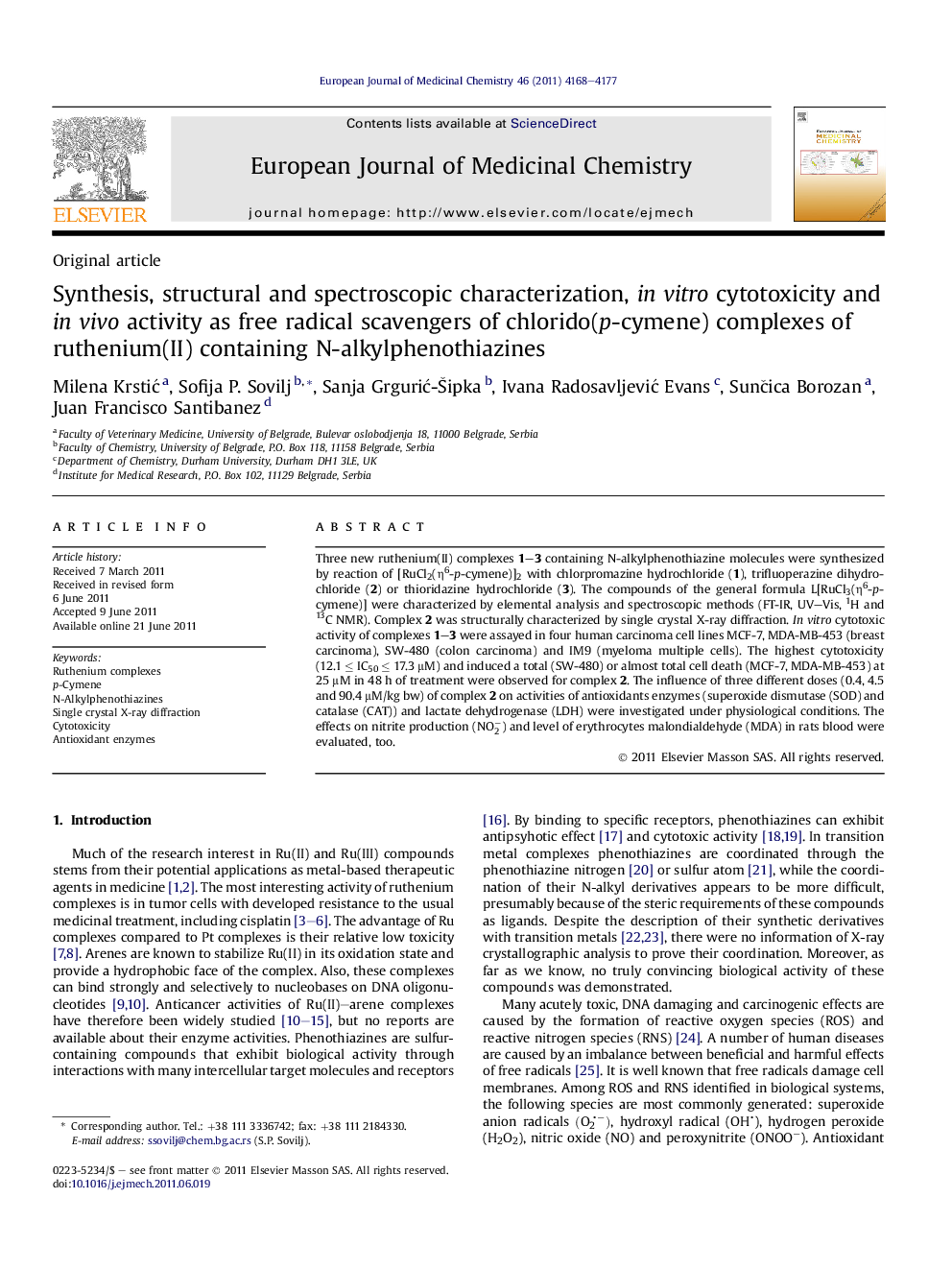| Article ID | Journal | Published Year | Pages | File Type |
|---|---|---|---|---|
| 1396178 | European Journal of Medicinal Chemistry | 2011 | 10 Pages |
Three new ruthenium(II) complexes 1–3 containing N-alkylphenothiazine molecules were synthesized by reaction of [RuCl2(η6-p-cymene)]2 with chlorpromazine hydrochloride (1), trifluoperazine dihydrochloride (2) or thioridazine hydrochloride (3). The compounds of the general formula L[RuCl3(η6-p-cymene)] were characterized by elemental analysis and spectroscopic methods (FT-IR, UV–Vis, 1H and 13C NMR). Complex 2 was structurally characterized by single crystal X-ray diffraction. In vitro cytotoxic activity of complexes 1–3 were assayed in four human carcinoma cell lines MCF-7, MDA-MB-453 (breast carcinoma), SW-480 (colon carcinoma) and IM9 (myeloma multiple cells). The highest cytotoxicity (12.1 ≤ IC50 ≤ 17.3 μM) and induced a total (SW-480) or almost total cell death (MCF-7, MDA-MB-453) at 25 μM in 48 h of treatment were observed for complex 2. The influence of three different doses (0.4, 4.5 and 90.4 μM/kg bw) of complex 2 on activities of antioxidants enzymes (superoxide dismutase (SOD) and catalase (CAT)) and lactate dehydrogenase (LDH) were investigated under physiological conditions. The effects on nitrite production (NO2−) and level of erythrocytes malondialdehyde (MDA) in rats blood were evaluated, too.
Graphical abstractRuthenium(II)-arene complexes with N-alkylphenothiazine were synthesized and characterized. In vitro cytotoxic effects in four human carcinoma cell lines and in vivo enzyme activity of the complexes were observed.Figure optionsDownload full-size imageDownload as PowerPoint slideHighlights► The chlorido(p-cymene) complexes of ruthenium(II) with N-alkylphenothiazines were synthesized. ► Complex with trifluoperazine (2) was characterized by single crystal X-ray diffraction. ► Complex 2 showed the highest antiproliferative effects in four human carcinoma cell lines. ► Complex 2 inhibited antioxidant enzymes activities. ► The positive effect was shown on the heart muscle by reducing the level of LDH2 isoenzymes.
